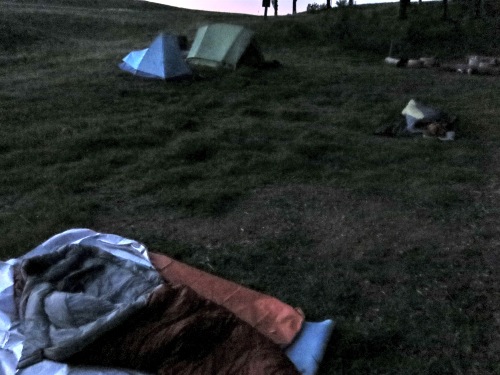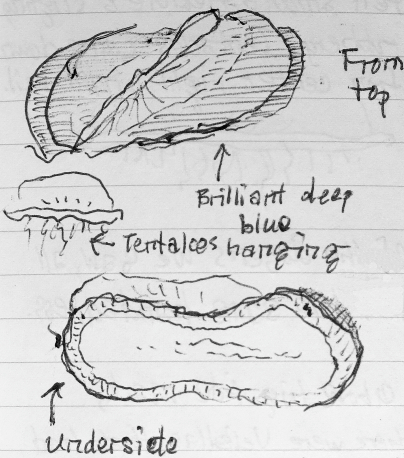More and more, I’m coming to believe that if organized religion is going to help fix global climate weirdness, we have to get out of our buildings more. Not that we should get rid of our buildings — we need our indoor spaces to accommodate a wide range of human person, including elders. But we also need to do more outdoor ministries.
Last night, group of youth spent the night at the Black Mountain trail camp, in Santa Cruz Mountains behind Silicon Valley. The hike in is two miles, with a total elevation gain of about 500 feet. We got to the camp, set some tents and made dinner.
After dark, some of us took a quick walk up to the summit of Black Mountain (elev. 2,800 ft.) and looked down at the bright lights of San Jose and Silicon Valley on one side, and the mysterious fog creeping up the valley on the other side of the Santa Cruz Mountains. Come to think of it, that image could serve as a metaphor for the role of organized religion in understanding humans’ place in the universe: if we wanted it to, organized religion could be the metaphorical high point where we could see both human-centered life on one side, and non-human-centered life on the other side.
Back in camp, some of us slept in tents, and some of us just slept out under the stars. The moon was really bright, so I slept restlessly. I awakened before dawn, and snapped this photo of our campsite:

Dawn from the top of Black Mountain was beautiful: orange sky at the horizon and pink clouds above. After a breakfast of bacon hot chocolate, and more bacon, we hiked out, and were back in Silicon Valley by about ten. It was a short trip, but short trips fit in well with the busy schedules of our teens.

